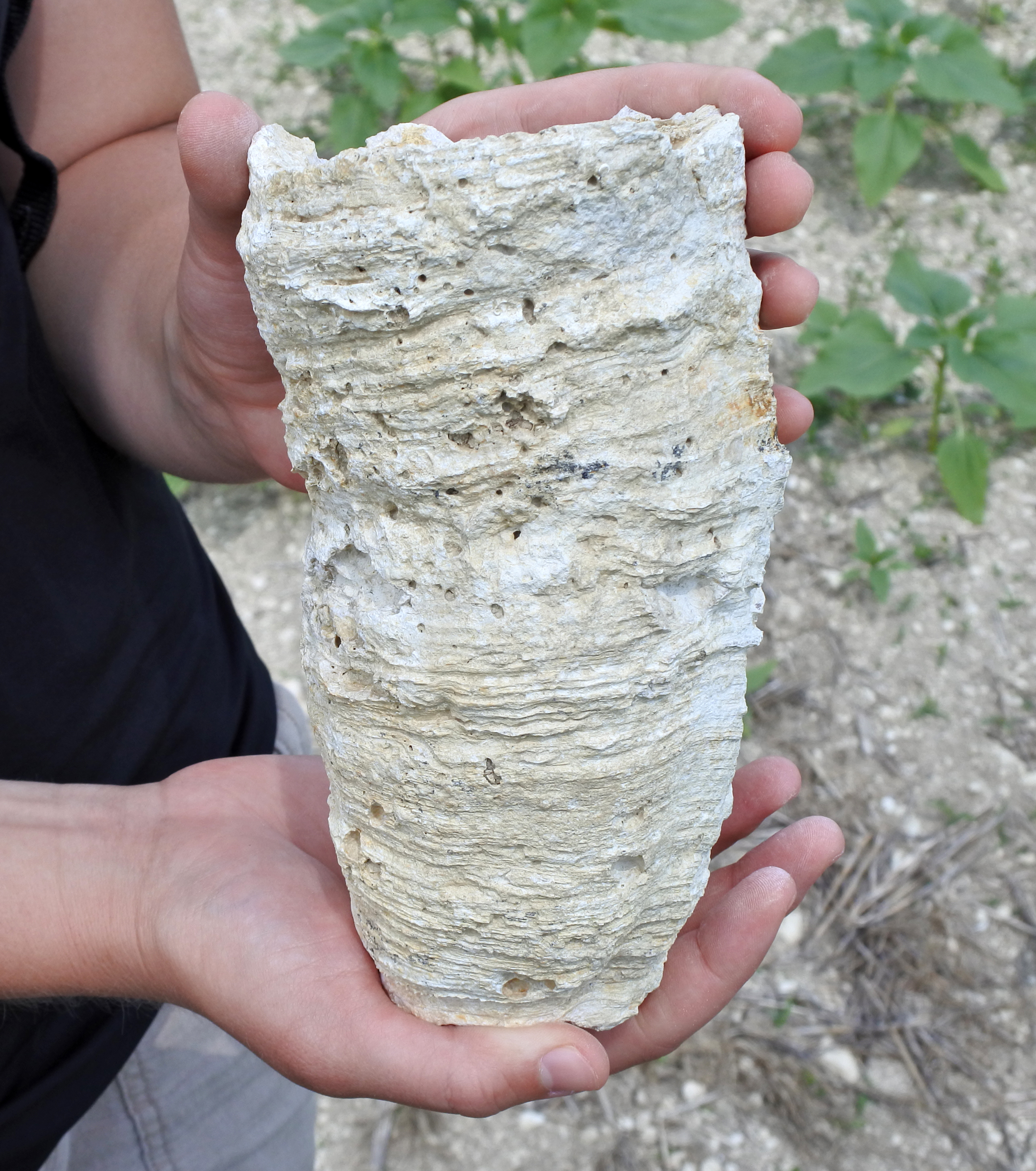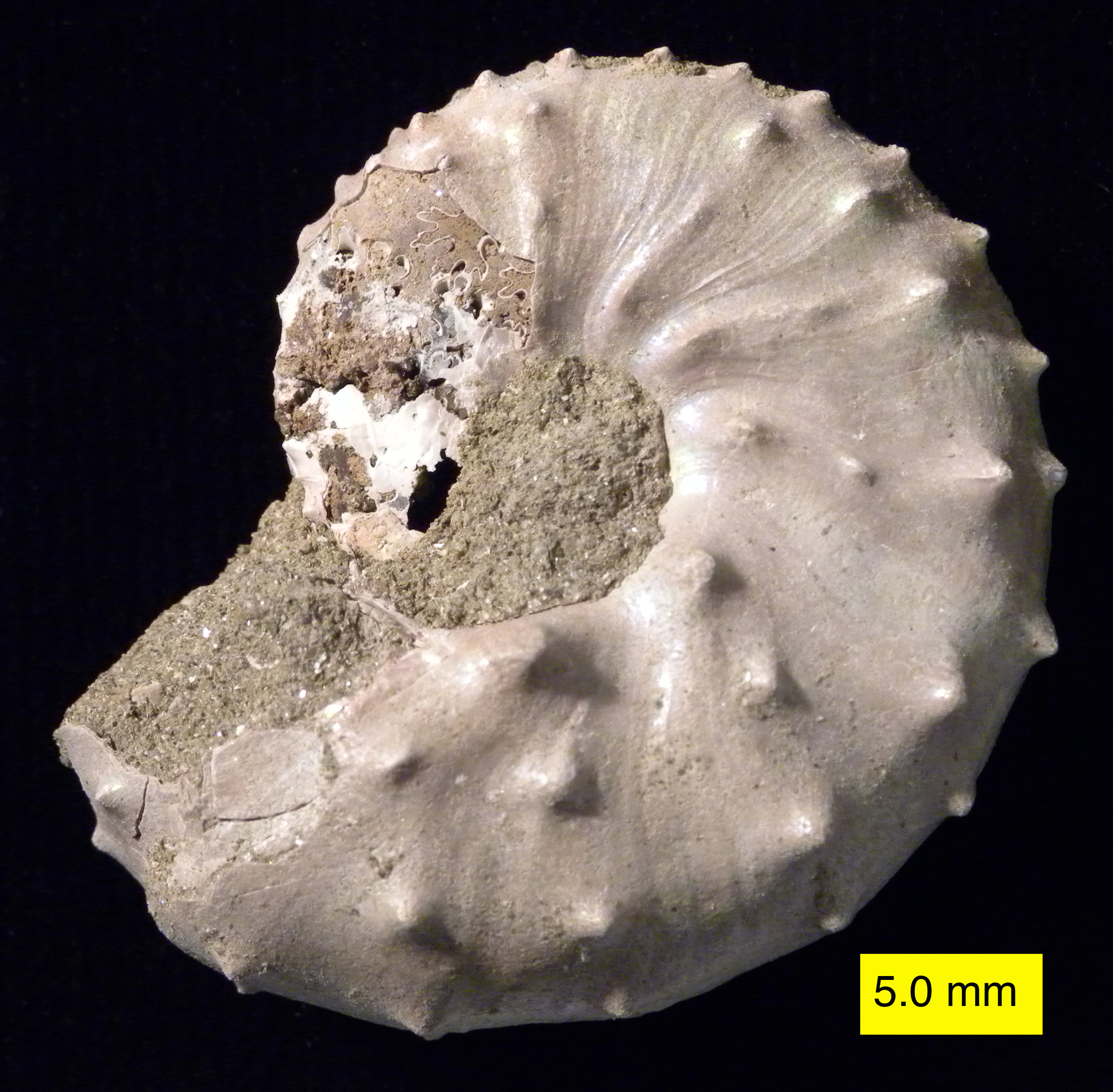|
Rudists
Rudists are a group of extinct box-, tube- or ring-shaped Marine (ocean), marine Heterodonta, heterodont bivalves belonging to the order Hippuritida that arose during the Late Jurassic and became so diverse during the Cretaceous that they were major reef-building organisms in the Tethys Ocean, until their complete extinction at the close of the Cretaceous. Shell description The Late Jurassic forms were elongated, with both Valve (mollusc), valves being similarly shaped, often pipe or stake-shaped, while the reef-building forms of the Cretaceous had one valve that became a flat lid, with the other valve becoming an inverted spike-like cone. The size of these conical forms ranged widely from just a few centimeters to well over a meter in length. Their "classic" morphology (biology), morphology consisted of a lower, roughly conical Valve (mollusc), valve that was attached to the seafloor or to neighboring rudists, and a smaller upper valve that served as a kind of lid for the organ ... [...More Info...] [...Related Items...] OR: [Wikipedia] [Google] [Baidu] |
Radiolitidae
''Radiolitidae'' is a family of rudists in the order Hippuritida. Fossil record These rudists lived between the Jurassic and the Cretaceous The Cretaceous ( ) is a geological period that lasted from about 143.1 to 66 mya (unit), million years ago (Mya). It is the third and final period of the Mesozoic Era (geology), Era, as well as the longest. At around 77.1 million years, it is the ... (age range: 130.0 to 66.043 million years ago). Genera Genera within this family include: * † '' Agriopleura'' Kühn 1832 * † '' Apulites'' Tavani 1958 * † '' Archaeoradiolites'' Fenerci-Masse et al. 2006 * † '' Biradiolites'' d'Orbigny 1850 * † '' Bournonia'' Fischer 1887 * † '' Bystrickya'' Lupu 1976 * † '' Chiapasella'' Müllerried 1931 * † '' Colveraia'' Klinghardt 1921 * † '' Contraspira'' Mitchell 2009 * † '' Darendeella'' Karacabey-Oztemür 1976 * † '' Distefanella'' Parona 1901 * † '' Dubertretia'' Cox 1965 * † '' Durania'' Douvillé 1908 * † '' Eoradiolit ... [...More Info...] [...Related Items...] OR: [Wikipedia] [Google] [Baidu] |
Caprinidae
Caprinidae is a family of rudists, a group of unusual extinct saltwater clams, marine heterodont bivalves in the order Hippuritida. These stationary intermediate-level epifaunal suspension feeders lived in the Cretaceous period, from 140.2 to 66.043 Ma. The rudists became extinct at the end of the Cretaceous, apparently as a result of the Cretaceous–Paleogene extinction event The Cretaceous–Paleogene (K–Pg) extinction event, also known as the K–T extinction, was the extinction event, mass extinction of three-quarters of the plant and animal species on Earth approximately 66 million years ago. The event cau .... Fossils of this genus have been found in the sediments of Europe, China, Cuba, Egypt, Guatemala, Jamaica, Japan, Mexico, Oman, the Philippines, Turkey, Russia, the United States and Venezuela. Genera * †'' Antillocaprina'' * †'' Caprina'' * †'' Caprinula'' * †'' Caprinuloidea'' * †'' Coalcomana'' * †'' Conchemipora'' * †'' Guzzyella'' * † ... [...More Info...] [...Related Items...] OR: [Wikipedia] [Google] [Baidu] |
Diceratidae
Diceratidae is a family of rudists, a group of unusual extinct saltwater clams, marine heterodont bivalves in the order Hippuritida. Genera Genera within the family Diceratidae: *†''Diceras ''Diceras'' is an extinct genus of fossil saltwater clams, marine heterodont bivalve molluscs. These bivalves were stationary epifaunal suspension feeders. Species Species within the genus ''Diceras'': *†'' Diceras brevicornum'' Karczewski ...'' Lamarck, 1805 ReferencesPaleobiology Database Prehistoric bivalve families Jurassic first appearances Cretaceous extinctions [...More Info...] [...Related Items...] OR: [Wikipedia] [Google] [Baidu] |
Heterodonta
Heteroconchia is a Taxonomy (biology), taxonomic infraclass of diverse bivalve molluscs, belonging to the subclass Autobranchia. This infraclass includes the cockle (bivalve), cockles, Venus clams, the Unionida, freshwater mussels, Palaeoheterodonta, brooch clams, as well as Heterodonta and Archiheterodonta. Description These bivalves are distinguished by having the two halves of the Bivalve shell, shell equally sized (i.e, they are ''equivalved'') and having a few hinge teeth, cardinal teeth separated from a number of long hinge teeth, lateral teeth. Their shells lack a nacreous layer, and the gills are lamellibranch in form. Most species have a siphon (mollusc), siphon. Orders and families The following tree is their info which has been updated with the latest information from the World Register of Marine Species: Infraclass: Heteroconchia *Unclassified family: †Lipanellidae *Subterclass: Archiheterodonta **Order: †Actinodontida ***Superfamily: †Amnigenioidea ****Fam ... [...More Info...] [...Related Items...] OR: [Wikipedia] [Google] [Baidu] |
Cretaceous
The Cretaceous ( ) is a geological period that lasted from about 143.1 to 66 mya (unit), million years ago (Mya). It is the third and final period of the Mesozoic Era (geology), Era, as well as the longest. At around 77.1 million years, it is the ninth and longest geological period of the entire Phanerozoic. The name is derived from the Latin , 'chalk', which is abundant in the latter half of the period. It is usually abbreviated K, for its German translation . The Cretaceous was a period with a relatively warm climate, resulting in high Sea level#Local and eustatic, eustatic sea levels that created numerous shallow Inland sea (geology), inland seas. These oceans and seas were populated with now-extinct marine reptiles, ammonites, and rudists, while dinosaurs continued to dominate on land. The world was largely ice-free, although there is some evidence of brief periods of glaciation during the cooler first half, and forests extended to the poles. Many of the dominant taxonomic gr ... [...More Info...] [...Related Items...] OR: [Wikipedia] [Google] [Baidu] |
Requieniidae
Requieniidae is a family of rudists, in the order Hippuritida, which lived from 155.7 to 66.043 million years ago. Taxonomy Placed by the WoRMS and Fossilworks Fossilworks was a portal which provides query, download, and analysis tools to facilitate access to the Paleobiology Database, a large relational database assembled by hundreds of paleontologists from around the world. History Fossilworks was cr .... Family Requieniidae Kutassy, 1934 * Subfamily: Matheroniinae ** Genus: '' Hypelasma'' ** Genus: '' Kugleria'' ** Genus: '' Lovetchenia'' ** Genus: '' Matheronia'' ** Genus: '' Rutonia'' * Subfamily: Requieniinae ** Genus: '' Apricardia'' ** Genus: '' Bayleia'' ** Genus: '' Bayleoidea'' ** Genus: '' Pseudotoucasia'' ** Genus: '' Requienia'' ** Genus: '' Toucasia'' References Prehistoric bivalve families Hippuritida {{Paleo-bivalve-stub ... [...More Info...] [...Related Items...] OR: [Wikipedia] [Google] [Baidu] |
Cretaceous–Paleogene Extinction Event
The Cretaceous–Paleogene (K–Pg) extinction event, also known as the K–T extinction, was the extinction event, mass extinction of three-quarters of the plant and animal species on Earth approximately 66 million years ago. The event caused the extinction of all non-avian dinosaurs. Most other tetrapods weighing more than also became extinct, with the exception of some ectothermic species such as sea turtles and crocodilians. It marked the end of the Cretaceous period, and with it the Mesozoic era, while heralding the beginning of the current era, the Cenozoic. In the geologic record, the K–Pg event is marked by a thin layer of sediment called the Cretaceous–Paleogene boundary, K–Pg boundary or K–T boundary, which can be found throughout the world in marine and terrestrial rocks. The boundary clay shows unusually high levels of the metal iridium, which is more common in asteroids than in the Earth's crust. As originally proposed in 1980 by a team of scientists le ... [...More Info...] [...Related Items...] OR: [Wikipedia] [Google] [Baidu] |
Maurens Rudist
Maurens is the name or part of the name of the following communes in France: * Maurens, Dordogne, in the Dordogne department * Maurens, Haute-Garonne, in the Haute-Garonne department * Maurens, Gers, in the Gers department * Maurens-Scopont, in the Tarn department {{geodis ... [...More Info...] [...Related Items...] OR: [Wikipedia] [Google] [Baidu] |


